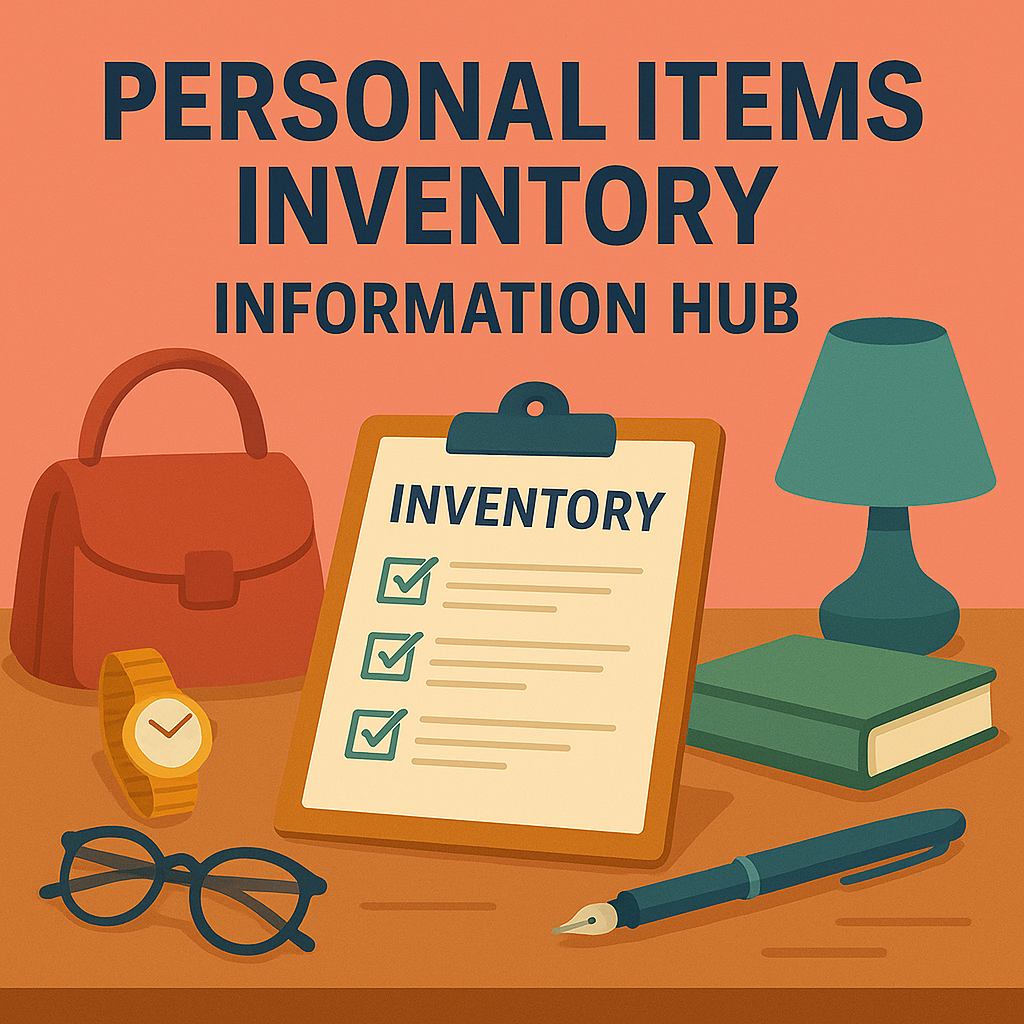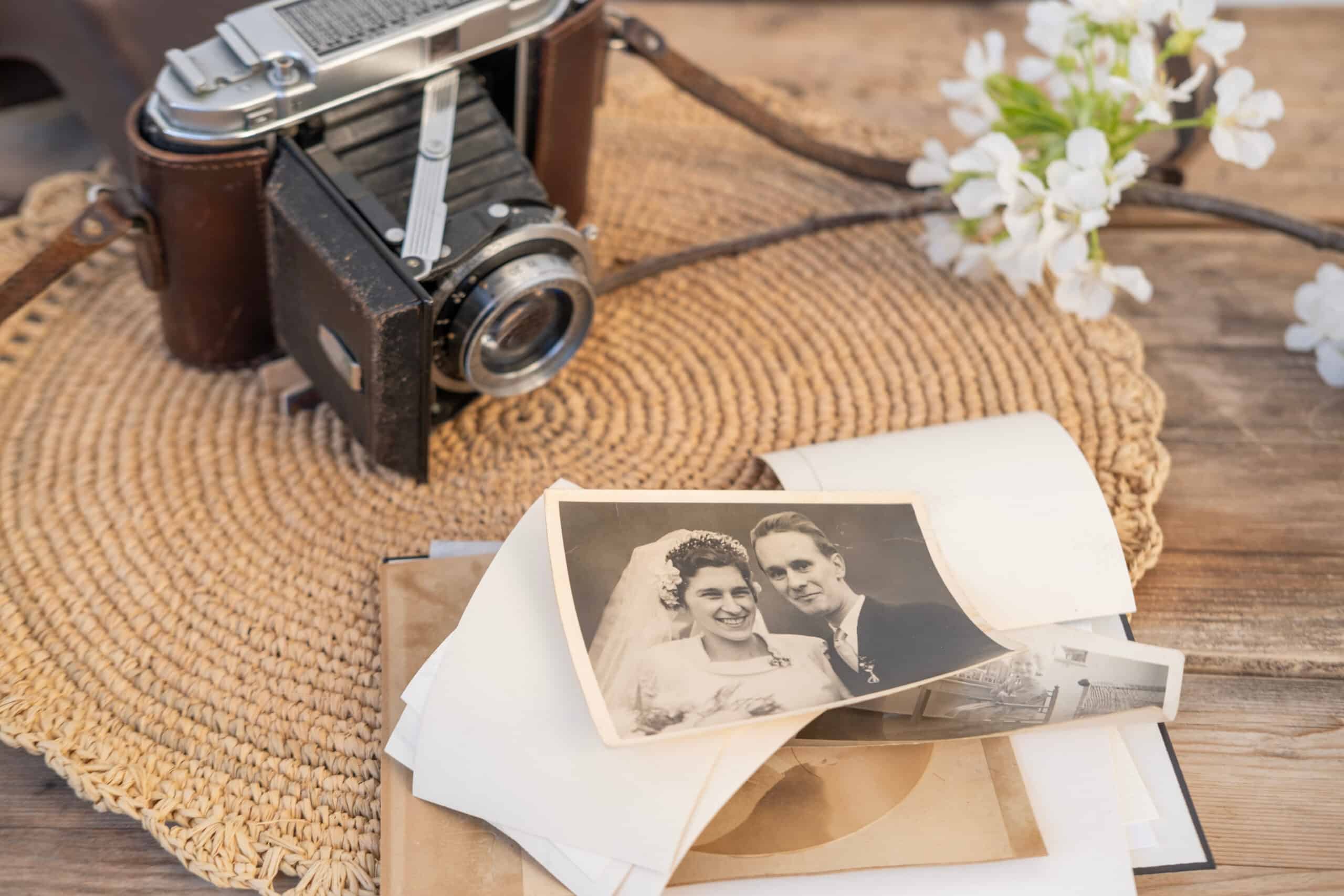Leave Your Heirs The Gift of Organization
The Personal Item Inventory Hub
Taking an inventory of your personal belongings is a crucial step in organizing your estate and ensuring that your most valued items are properly documented. From family heirlooms and jewelry to everyday household items, having a clear record can help protect your legacy, ease the burden on your loved ones, and prevent confusion down the road. Whether you’re preparing for the future or assisting a family member, this guide will help you create a comprehensive inventory to preserve your possessions and provide clarity for those who matter most.

Key Things To Know
Before you begin creating your personal items inventory, here are some important points to keep in mind:
- Accuracy Matters: When documenting your personal belongings, take care to include all relevant details, such as descriptions, serial numbers, and photographs. Accurate information will help if items need to be insured, appraised, or distributed later
- Break It Down by Category: Grouping items into categories (e.g., jewelry, furniture, electronics) will make the process more manageable and help ensure that nothing is overlooked.
- Update Regularly: Your inventory should be a living document. Make sure to update it as you acquire or dispose of items, especially valuables or heirlooms that hold significant sentimental or financial value.
- Secure Your Inventory: Keep your inventory safe. Whether stored digitally or on paper, it should be in a secure location that can be accessed easily by trusted individuals, such as a family member or estate planner.
- Consider the Emotional Value: While some items may not hold significant monetary value, they might carry emotional importance. Be sure to document these items, as they can be a source of comfort or conflict among loved ones after your passing.
- Consider Legal and Insurance Implications: An inventory can play a critical role in estate planning and insurance. It can ensure that items are accurately valued and properly distributed, helping to avoid disputes and potential tax issues later on.
How To Get Started
Taking an inventory of your personal items doesn’t need to be complicated. Follow these steps to get organized and ensure your belongings are properly documented:
- Choose Your Method: Decide if you’ll track your inventory digitally, with paper, or both. Digital tools like spreadsheets, apps, or inventory software make updates easy, while paper lists can serve as a physical backup. Find what works best for you.
- Set Aside Time: Set aside dedicated time to tackle the inventory process. It’s helpful to break it down into smaller, manageable sections, such as one room or category at a time. You don’t need to do it all at once—pace yourself!
- Start with High-Value and Sentimental Items: Begin by documenting items that are high in value, such as jewelry, artwork, collectibles, and family heirlooms. These items are often the most important to track and ensure they are accounted for properly.
- Work Room by Room: Go room by room to ensure no items are missed. Focus on areas like the living room, bedroom, garage, or attic—anywhere personal belongings may be stored. Catalog everything from furniture to electronics to knick-knacks.
- Use a Checklist or Template: Having a template or checklist to follow can help you stay organized. You can create your own or use a ready-made version to list each item, along with important details like descriptions, photos, and estimated values.
- Document and Photograph: For each item, write down key details: brand, model, serial numbers, and any distinguishing features. Take clear, high-quality photos of each item to support your documentation. These images can help with identification in case of insurance claims or disputes.
- Secure and Store Your Inventory: Once you've documented your items, store your inventory securely. For digital inventories, use cloud storage or encrypted drives. If you're using paper, keep your list in a safe location—consider giving a copy to a trusted family member or estate planner.
Checklists, Guides, & Resources
Buried in Work offers a variety of checklists, guides, and other resources. Below are some of the most popular ones related to this information hub.
Find A Service Provider Near You
Need professional assistance? Use our directories to find trusted service providers near you who specialize in estate planning, end-of-life organization, and related services.
Articles
Frequently Asked Questions
Estate organization involves gathering, documenting, and securely storing essential legal, financial, and personal records to ensure a smooth transition for your loved ones. Below are answers to common questions about how to get started, what documents to include, and best practices for keeping your estate organized.
Disclaimer: The information provided on this website and by Buried in Work is for general informational purposes only and should not be considered legal advice. Please consult with a qualified attorney or subject matter expert for advice specific to your situation.





